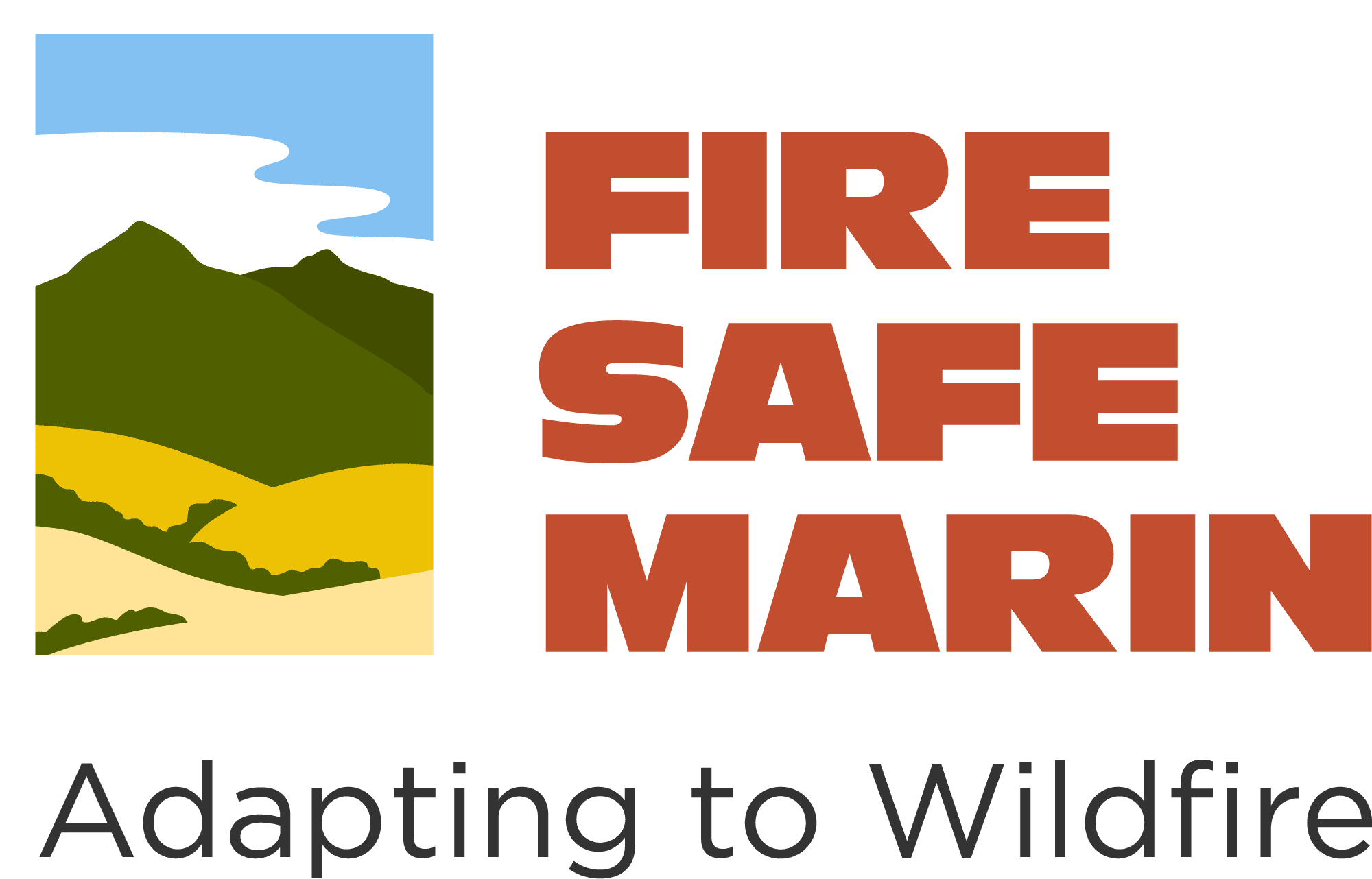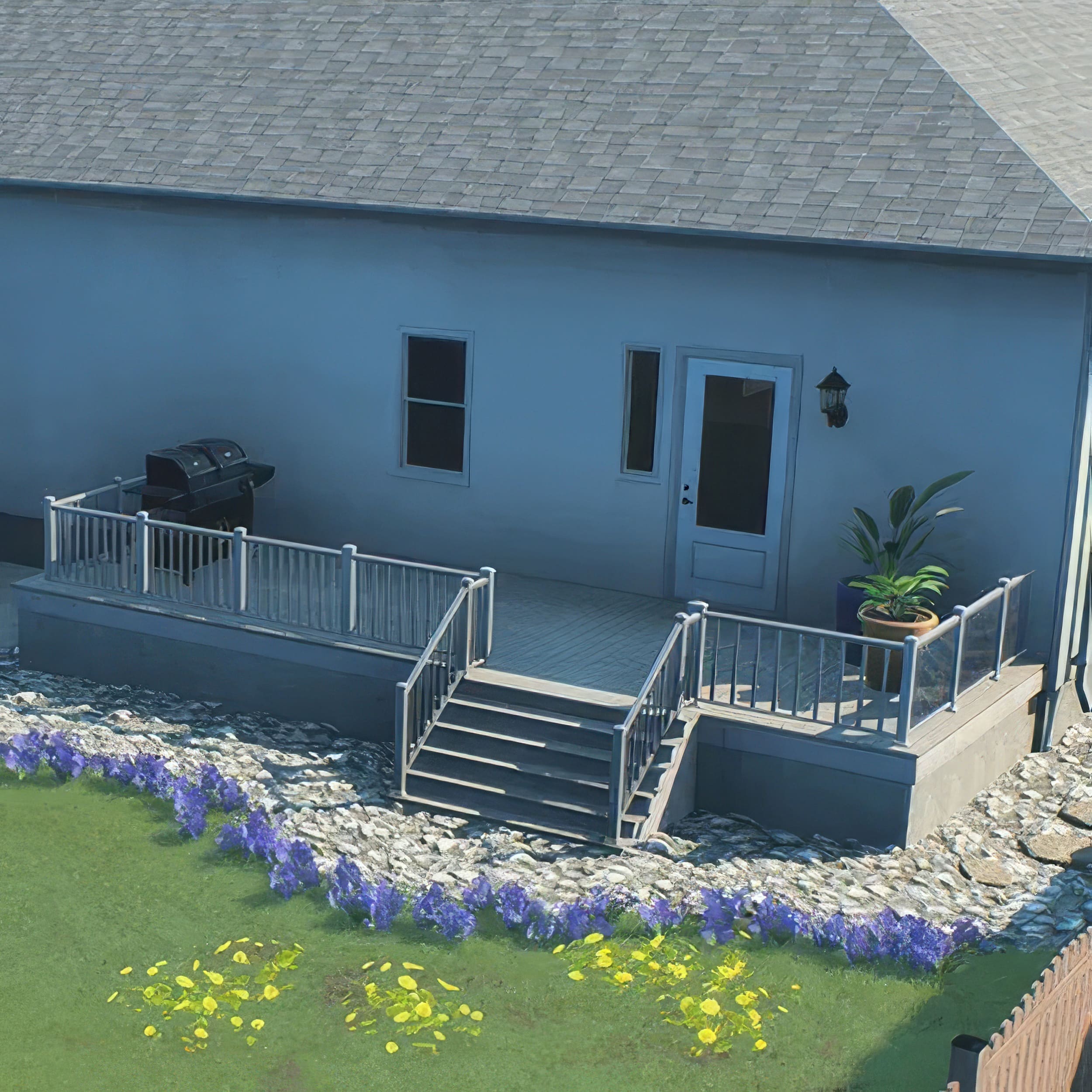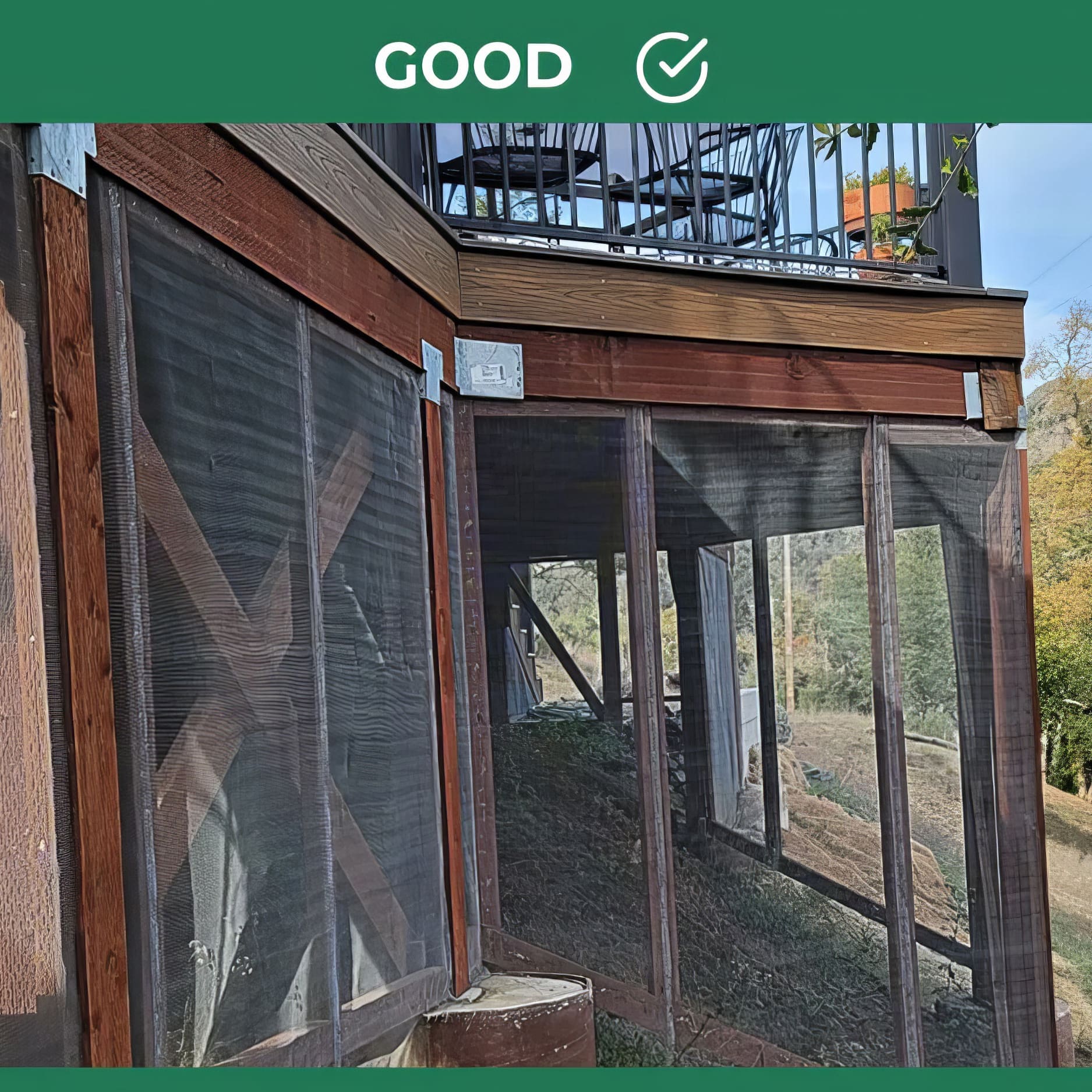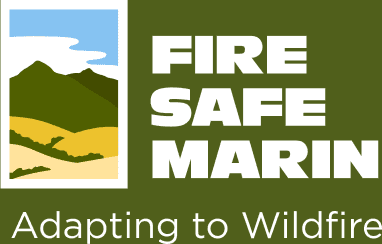IN THE EVENT OF AN EMERGENCY THIS SITE IS NOT MONITORED. FOR CURRENT INFORMATION GO TO HTTPS://EMERGENCY.MARINCOUNTY.GOV.
Fire-Resistant Decks, Patios, & Porches
Attached Decks & Wildfires
Summertime often means cookouts on the deck and gatherings with friends. But did you know that choosing the right kind of materials to build your deck and keeping it clear of combustible materials (both on the top and underneath) are critical steps in reducing the risk of a wildfire damaging your home?
Watch this video to see how different types of decking materials and combustible materials on top of the deck performed in wildfire testing. Then, make clearing the deck part of your next weekend maintenance project.
Use your deck for entertaining, but remember – when a wildfire threatens, move combustible deck furniture and cushions inside or move as far away from the house as possible. Treat other combustible items, such as a broom, like your furniture and move them inside or far away from the house. Any liquid propane tank for a grill should be moved off the deck and away from the home.

Unfortunately the area under decks is often to store flammable materials
Tips for a Safe Deck
- Is your home located on a steep slope? If your deck overhangs a steep slope, be sure your defensible space is sufficient to minimize flames spreading up the hill. Consider building a noncombustible wall across the slope approximately 15–20 feet from the edge of the deck.
- Do you have materials stored under the deck? Do not store combustible materials under your deck. If you have no other option, installing a noncombustible siding product around the deck perimeter may be an option. Be sure the enclosed space is adequately ventilated to minimize the chance of water-related damage.
- Are the materials used to build your deck combustible? Most deck boards are combustible, including wood, plastic, and wood-plastic composites. Solid surface decks, such as those made from lightweight concrete, are usually noncombustible but are also more expensive. If you live in a wildfire-prone area anywhere in the country, when it’s time to replace deck boards, choose a product that complies with the requirements of the California Building Code, as provided in the Office of the State Fire Marshal Wildland Urban Interface Handbook.
- Has debris accumulated between deck boards? Regularly clean out debris from between deck board joints and other areas where debris has accumulated. Check the condition of wood deck boards and structural support members–replace or repair rotted members.
Regardless of what type of deck board is used, ignition can occur from vegetative debris (grass, leaves, needles) that accumulate or other combustible materials that are stored under the deck. Embers can readily ignite these materials during a fire. Enclosing the underside of the deck is one method to reduce the risk of ignition. There are two ways to enclose your deck. You can enclose it by applying sheathing, siding or a screening around the perimeter (a vertical enclosure), or by attaching sheathing/panel materials to the underside of the structural support members (a horizontal enclosure). The more careful you are about not storing combustible materials near your home (and under your deck), maintaining near-home vegetation, and cleaning up wind-blown debris, the less important enclosing your deck becomes. Be aware, however, that elevated winds that can occur during red flag days and during a wildfire will blow vegetative debris, and embers, into this area.
The closer the deck is to the ground, the harder it is to use as a storage area, but it also becomes more difficult to clean out debris that will accumulate. If you have a solid surface deck (e.g., one with a lightweight concrete walking surface), it is probably already enclosed horizontally. We don’t recommend using a horizontal enclosure if the walking surface of your deck is deck boards. Water will easily enter this enclosed area through the between-board gaps – this water cannot easily get out. If you are going to store combustible materials under your deck, then vertically enclosing the deck would make sense. A screening material (e.g., 1/8-inch corrosion resistant screening material) is the best option for a vertical enclosure because you won’t have to worry about moisture-related degradation (air will readily flow through the screen) of wood members and corrosion of metal fasteners. We do not recommend vertically enclosing your deck with a siding or sheathing material because of the potential for moisture-related degradation in the under-deck area.
Deck enclosure will not guard against embers falling on top of the deck, so be aware of combustible material that you have on your deck. Firewood should be moved off of the deck during wildfire season. Combustible materials commonly found on decks (e.g., brooms, umbrellas, patio furniture, doormats, etc.) should be moved off the deck if possible, or moved as far from the building as possible during wildfires and spaced to avoid clustering items. Many embers landing on the deck will fall through between-board gaps – even when decks are vertically enclosed, fine fuels in the under-deck area can still be vulnerable.
Deck Enclosures
Regardless of what type of deck board is used, ignition can occur from an accumulation of combustible material (grass, leaves, needles) under the deck. Embers can readily ignite this debris during a fire. Enclosing the underside of the deck is one method to reduce the risk of ignition. There are two ways to enclose your deck. You can enclose it by applying sheathing or siding around the perimeter (a vertical enclosure), or by attaching- ing sheathing/panel materials to the underside of the structural support members (a horizontal enclosure). The more careful you are about not storing combustible materials near your home (and under your deck), maintaining near-home vegetation, and cleaning up windblown debris, the less important enclosing your deck becomes.
The closer the deck is to the ground, the harder it is to use as a storage area, but it also becomes more difficult to clean out debris that will accumulate. If you have a solid surface deck (e.g., one with a lightweight concrete walking surface), it is probably already enclosed horizontally. If you are going to store combustible materials under your deck, then vertically enclosing it with a noncombustible or ignition-resistant material would make sense. If you do this, make sure you avoid any potential moisture-related degradation issues by providing adequate venting or take other moisture control actions.
Deck enclosure will not guard against embers falling on top of the deck, so be aware of combustible material that you have on your deck. Firewood should be moved off of the deck during wildfire season. Combustible materials commonly found on decks (e.g., brooms, umbrellas, patio furniture, doormats, etc.) should be moved off the deck if possible, or moved as far from the building as possible during wildfires and spaced to avoid clustering items.
Protecting Decks, Patios, & Porches
Risk Factors
Are the materials used to construct the deck, patio, or porch combustible?
- Examples of combustible materials include solid wood or wood plastic composite products.
- Some manufacturers are now incorporating fire retardant chemicals into their products, and fire performance information for many decking products is now available on the manufacturer’s website.
- Wood decking treated with an exterior fire retardant also is available.
- Do you have combustible materials stored under or on top of the area?
- Is nearby vegetation well maintained?
- Combustible materials and vegetation can act as a wick and allow the fire to move to the deck and other building materials, igniting it and other items stored underneath or nearby.
- This is particularly important for decks when the house or business is sited on a sloped lot.
- Depending on the type and condition of the vegetation, flame lengths on a slope can reach more than 30 feet, so even an elevated deck can be vulnerable.

Steps to Reduce the Risk of Wildfire Damage
- To determine if enclosing your deck, patio or porch would be beneficial, consider whether you store combustible materials underneath it, or if your vegetation management plan is inadequate, particularly in the 0- to 30-foot zone.
- Avoid storing flammable materials on top of or beneath the deck.
- Providing sufficient ventilation or other means for water to drain out is a critical step in the enclosure process.
- The national building code standard requirement for a crawlspace is one square foot of venting for every 150 square feet of floor area. Allow at least this much ventilation and maybe more if you are in a particularly wet area. If you do not allow any wood or wood-based structural support members and boards to dry out, fungal decay will become the biggest threat to your deck, patio, or porch.
- Enclosing your deck, patio or porch will not reduce the risk of the top being exposed to embers. For that, the best protection is to keep the surface clear of leaves, pine needles, and other vegetative debris.
- If the house is supported by a column and beam system, and it doesn’t have skirting around the perimeter, add a skirting of noncombustible material.
- Remember to provide vents on all sides to ensure proper ventilation. California’s Building Code has taken the lead in developing guidance for wildfire protections.
- Attaching a metal flashing strip, approximately 18 inches tall, between the top of the deck, patio, or porch and the exterior (combustible) siding can create a barrier between exposure to burning debris ignited by embers and flames near the point where the house intersects with the deck, patio or porch.
- When attaching the flashing, make sure it is tucked in behind the siding where the top of the flashing terminates. This will help prevent water from seeping between the flashing and the siding.
- Alternatively, if you can find a noncombustible siding material with a similar pattern, the lower two or three courses of siding could be replaced.
- When it’s time to replace this feature of the house, choose a noncombustible or ignition-resistant material.
- Examples of ignition-resistant materials include “non-combustible materials” that don’t burn, exterior grade fire-retardant-treated wood lumber, fire-retardant-treated wood shakes and shingles listed by the State Fire Marshal (SFM), and any material that has been tested in accordance with SFM Standard 12-7A-5.
FAQS
I notice on your site that you recommend composite decks for fire safety. Where do you get that information? I didn’t believe you, so I took a torch to a small piece and it burned just like wood. Why aren’t you recommending ceramic, or cement tile like FEMA?
Synthetic decking materials have proven more resistant to ignition than wood surfaces. Taking a torch to any material is not a realistic ignition source, since wildfires typically ignite structures from firebrands or embers – with significantly different characteristics than a torch’s flame.
Our information comes from real-world experience and observations looking at thousands of structures that either burned – or more importantly, survived – wildfires. Validated and peer-reviewed research at IBHS backs up our findings and observations.
Tile and concrete are fine choices if your building and budget can accommodate them.










